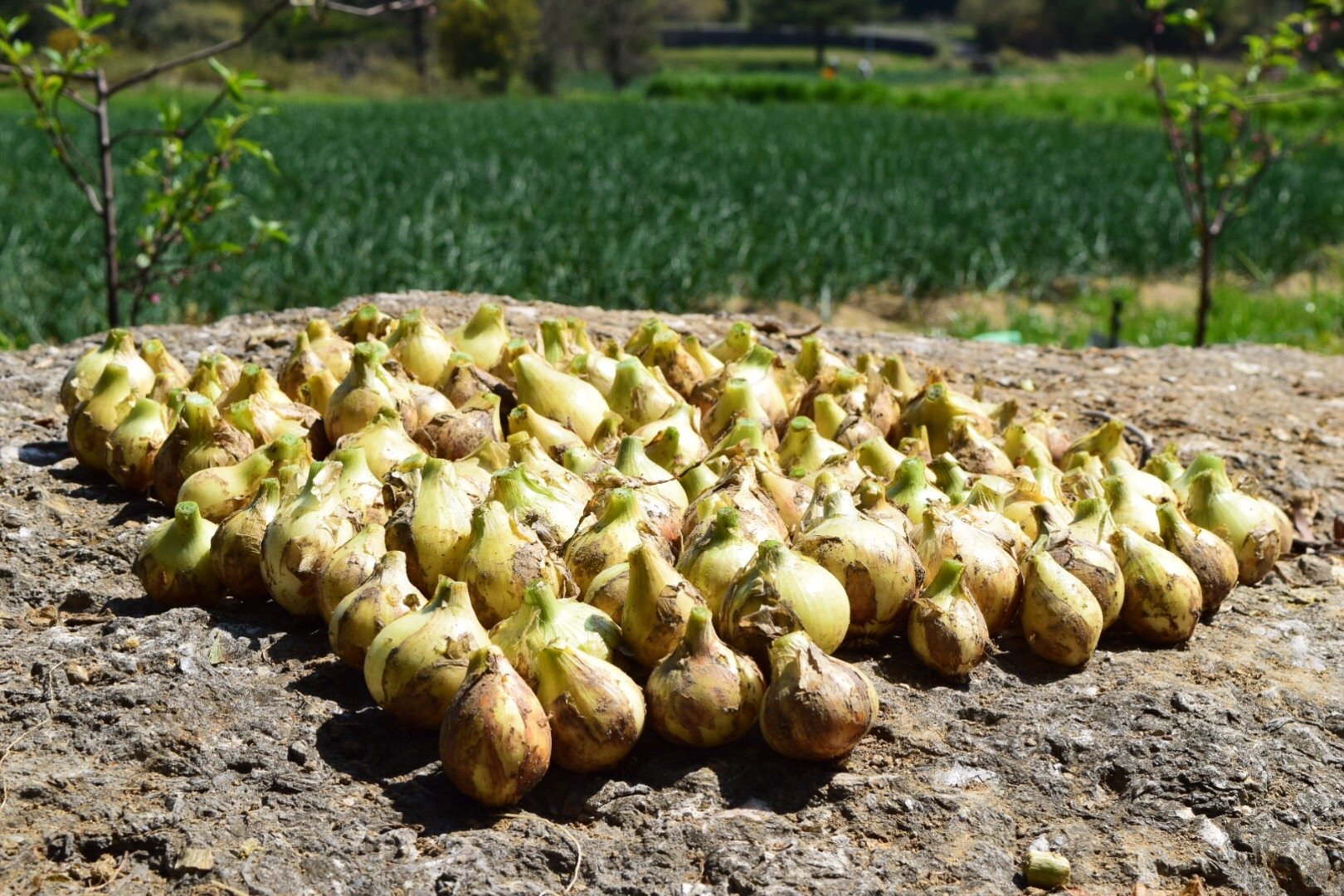
Onion production by the Nakagawa family in Minami Awaji
Onions are a staple ingredient of daily dishes such as hamburgers and curry. The vegetable is prized for its sweetness and texture as well as nutritional value. Actually, the average Japanese person consumes 21.5 onions a year (data of 2018). This essential food is now a branded product of Awaji Island which boasts the 3rd largest onion production nationwide. Compared to other regions, the quality and flavor of Awaji onions are considered special by Japanese people. In this article, we look at how the Nakagawa family in Minami Awaji City plants, grows and brings their produce to the market.

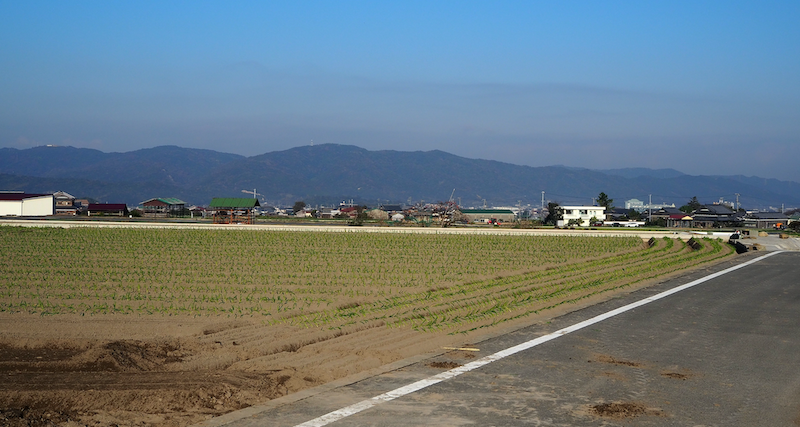
The Nakagawa family members are traditional onion growers who have cultivated the plant for the last three generations while doing other work at the same time. Currently, Mr. Nakagawa is an engineer at an electricity company and grows onions on the weekend and in his spare time alongside his family. Their home is on the Mihara plain of Minami Awaji City (Fig.1) surrounded by hills famous for rice production. The highest peak on Awaji Island, Mt. Yuzuruha, rises at the southern end of the plain facing the Naruto Channel home to one of the world’s biggest whirlpools flowing to the Pacific Ocean. The north slope of the mountain, called the Sunny Mihara Plain, is an alluvial fan, ideal for onion production due to its granite based soil that allows effective drainage, along with a steady supply of water. This plain is suitable not only for onion cultivation but also for rice and lettuce as well. Fields around the plain are completely covered with onion plants forming a kind of onion street (Fig. 2).
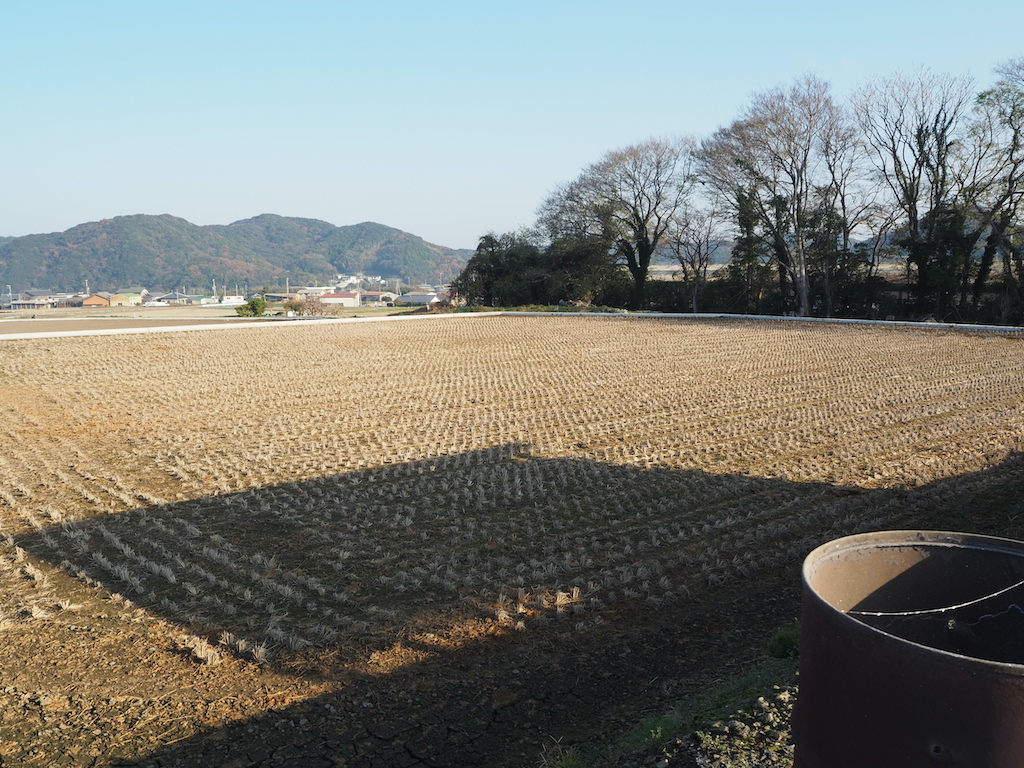

Before visiting the Nakagawa family, it may be useful to understand several basic points of onion production. Onions are classified into three types: early, middle and late. Early type onions are planted in early December, whereas middle and late types are planted in late December or early January. Usually seedlings are planted in November. One month later seedlings will have grown 10-20 cm long and are planted in the field. One month later fertilizer is added and in June mature onions are harvested and dried for around one week. Finally, those are brought to the market.
The photographs show the Nakagawa family planting onions in early December. The Nakagawas take care of 55 ares rice fields (Fig. 3) and 5 ares vegetable fields used for onion production. The rice fields are ploughed by tractor to make ridges for onion-seedlings (Fig. 4). Each ridge has grooves into which seedlings are planted with planting machines (Fig. 6). For spaces where machines cannot reach, family members do the planting by hand, each one 10 cm apart (Fig. 7). It takes all 3 family members the entire months of December and January to plant the whole field. As shown in Fig. 5, the seedlings are tied in bundles of about 100 per bunch for the machine. Over the next 6 months, each seedling will become a mature onion to be harvested.

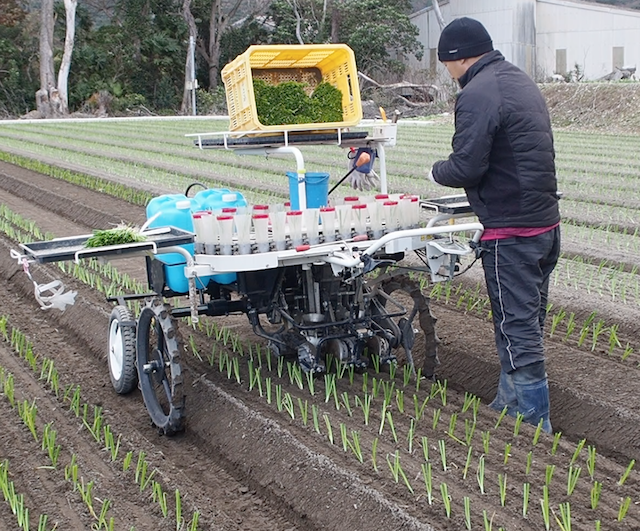
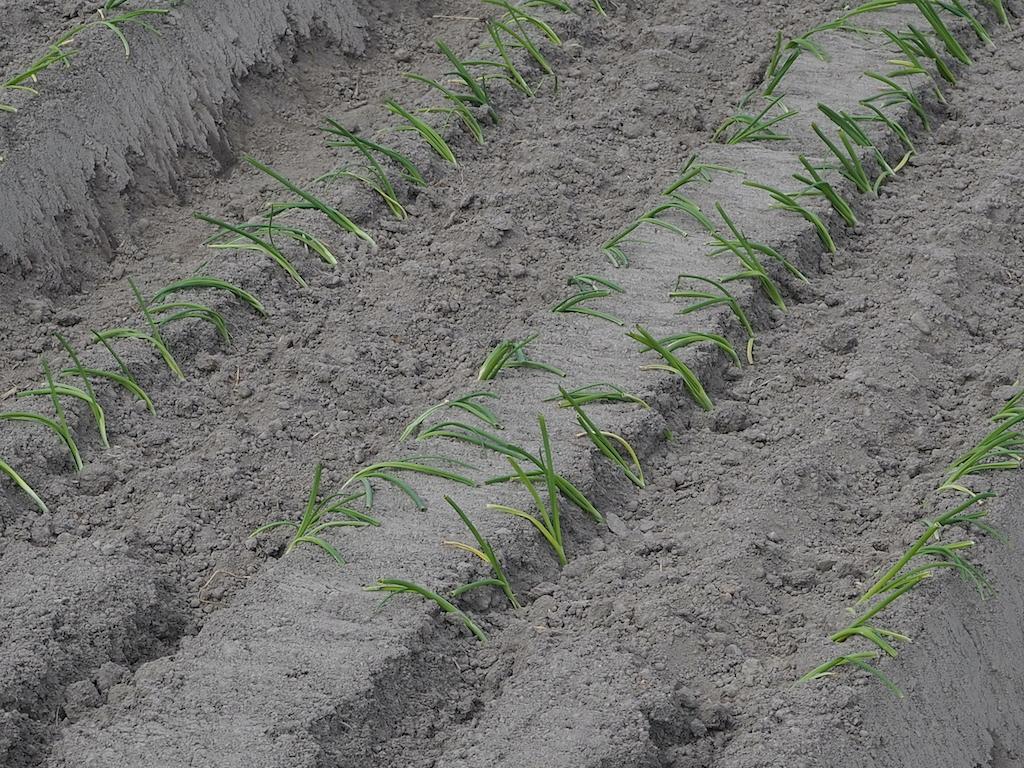
Onion production on Awaji Island has a long history. In 1888, trial production started by incorporating techniques developed in Hokkaido. In 1902, production increased along with sales. Today, north and south Minami Awaji City and some of Sumoto City form the center of production, covering around 3000 ha. From 2010 the Awaji onion was first established as a quality brand based on its sweet taste and tenderness. The results of Nakagawa onion production will be examined in detail in future articles.
